By Gustav Person
On the snowy field of Mollwitz, Poland, on April 10, 1741, newly installed King Frederick II of Prussia faced a formidable army of Austria. After initiating the War of the Austrian Succession by invading Silesia, Frederick had only recently been installed on the throne. A born military genius, Frederick was still inexperienced this early in his career, and more campaigns and warfare would have to intervene before he earned his sobriquet, Frederick the Great. At Mollwitz, after his cavalry had been totally routed and most of his guns lost, Frederick was persuaded to leave the field as he was facing certain defeat. Prussian Field Marshal Kurt von Schwerin was asked to provide the rear guard for what remained of the army. “Over the bodies of the enemy,” was his reply. The Prussian infantry was silent for a moment, but then advanced, their musket volleys rolling like continuous thunder. Faced by such a spectacle, the Austrian infantry refused to attack and conceded the battle to the Prussians.
While most students of military history are aware of the use of musket volley fire during 17th- and 18th-century warfare, the methods of delivery of that firepower often remain little known or appreciated. During most of the 17th century, the matchlock musket and the pike were the predominant infantry weapons. The prevailing ratio of musket to pike was 2 to 1. Battalions were formed six deep, with a pike block in the center and two flanking wings of musketeers. Starting about 1670, the flintlock gradually replaced the matchlock, and the plug bayonet also entered service, having been introduced first to British troops in garrison at Dunkirk in 1658. The socket bayonet became standard issue, effectively replacing the pike from the mid-1680s on. By 1703, all pikemen had vanished from British service.
Fire-by-Rank, Salvee, and the “Swede’s Way”
In the matchlock period, there were essentially three methods by which troops delivered their fire. First, in the traditional Dutch manner, the troops formed in ranks six deep and fired by rank. The front two ranks would step forward; the first would give fire and then file away to the rear to reload while the next rank fired and likewise filed to the rear. The process continued with each rank firing and wheeling away to the rear in rotation. Cavalrymen termed this method of advancing to fire, then falling back to reload, the caracole.
The second method was the Swedish salvee, originally developed by Gustavus Adolphus during the Thirty Years’ War. In the salvee method, six ranks doubled up three deep, the first rank kneeling while the second and third ranks closed up tightly. Then all three ranks would fire together in a shattering volley. This usually was followed by the men clubbing their muskets and falling on the enemy with the pikemen. The salvee method was used extensively during the English Civil War (1642-1651). The obvious disadvantage was that all the muskets were discharged at the same time and left the troops vulnerable as they were reloading. For this reason, the method tended to be used only immediately prior to hand-to-hand combat.
A third method, known as the “Swede’s way,” divided a wing of musketeers into a checkerboard pattern, each subdivision being three deep. The subdivisions at the front would give fire and reload while the rear subdivisions marched forward through the intervals to fire. They then retired through the intervals to reload while the advanced subdivisions again gave fire. The Battle of Breitenfeld, on September 17, 1631, provided an excellent example of the use of the Swedish tactic. This method was included in 1675 in King Charles II’s An Abridgement of the English Military Discipline.
The Swedish system provided forces with the ability to fire while either advancing or retreating, but the system had a number of drawbacks. It invariably disordered the battalion and detracted from the soldiers’ ability or inclination to aim. During this period, the French infantry occasionally used two other methods of delivering fire: firing by files and firing by divisions. Firing by files was executed by groups of two files at a time. The 10 men (if there were five ranks) would advance six paces to the front, spread out in a line, and fire. They would then return to their original places to reload while the next two files advanced and fired. Firing by division was similar in execution to firing by files, but it was conducted by four or six files.
“Plattons Fire” at the Battle of Killiecrankie
By the end of the 17th century, tactics changed again, caused primarily by the introduction of the flintlock musket, called the firelock. In 1694, British General Hugh McKay added an appendix, entitled the Rules of War for the Infantry, to a manual previously published as Commands for the Exercisis [sic] of Foot, Arm’d with Firelock-Muskets and Pikes; with the Evolutions. His later account of the Battle of Killiecrankie in Scotland, on July 27, 1689, proved that a new platoon firing system (known as “plattons fire”) had arrived with the Glorious Revolution in Great Britain.
The Dutch method was once again introduced, influenced by the large number of English officers who were veterans of service in the Low Countries. Basically, the infantry battalion was formed in a traditional six-deep formation, with each wing of musketeers doubling its ranks to three deep and then dividing into six platoons. The grenadiers were also divided on the flanks of each battalion, while two firelock men of each company were used to fire as sharpshooters. At the pass of Killiecrankie, as the Jacobite Highlanders’ charge began moving forward toward the British line, the platoons began firing at a range of 100 yards. Although all but two of the British battalions were eventually routed, they were able to inflict grievous losses on the charging Scots with the new platoon fire. The British defeat was largely caused by their use of the plug bayonet (affixed by jamming the wooden handle into the muzzle of the musket), which effectively stopped the volley fire at the most vulnerable moment.
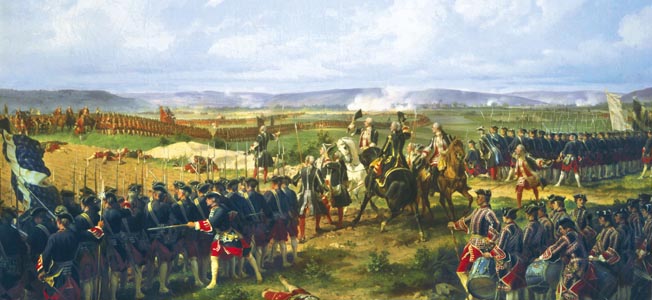
Evolving the Platoon Fire System
During the next 10 years, the platoon firing system was developed into the sophisticated form described in the Duke of Marlborough’s New Exercise of Firelocks and Bayonets, published in 1708 during the War of the Spanish Succession. In the new system, the British infantry battalion took the field and drew up in line in a predetermined order of 13 companies, with the grenadier company divided into two platoons, one on each flank. The whole battalion was formed into three ranks, closing to half-distance, or 18 inches, between each rank. The major or adjutant then divided the 12 line companies (omitting the grenadiers) into four grand divisions of three companies each, and each grand division in turn was formed into four equal-size platoons. Each platoon would number 30 to 50 men, depending on the effective strength of the battalion.
A battalion was thus reorganized into a total of 18 platoons, including the grenadiers. Next, the platoons were organized into at least three groups of six platoons apiece. The platoons were ordered to fire, not side by side but interspersed down the whole line in a carefully prearranged order to achieve continuity of fire from every part of the battalion line. The colonel stationed himself with a drummer seven paces in front of the color party in the center; the lieutenant colonel positioned himself 10 paces behind the center of the line to take command immediately should the colonel be killed or otherwise incapacitated.
The battalion was now ready to advance, and all knapsacks and superfluous equipment were sent to the rear. At about 60 paces from the enemy, the six platoons of the first firing group made ready, by verbal order or beat of drum, and the platoons began to fire simultaneously. As the first firing group began to reload, the second and third groups fired in rotation. Formed in three ranks, the first rank of each platoon knelt while the second crouched and the third rank stepped slightly to the right; the process was known as “locking on.”
The advantages of the platoon system were threefold. First, the new system facilitated the high degree of fire control by officers and noncommissioned officers; this in turn led to more accurate shooting and better discipline than was possible when firing by complete ranks. Platoon firing allowed the fire to be directed, if necessary, obliquely to the left or right and not just directly to the front of the battalion. Second, the three firings ensured that the enemy came under concentrated and continuous fire once the action opened; there was no let up. The psychological effects of such fire on recipients at ranges less than 100 yards cannot be overestimated. Third, one-third of a British battalion would always be loaded and thus ready to deal with any sudden emergency. At best, however, it was a complicated system.
The Duke of Cumberland and the Battle of Fontenoy
This method of delivering a battalion’s musketry proved so effective during the War of the Spanish Succession that it continued in use for the next 30 years. Under Marlborough the whole battalion halted before commencing its fire; however, by the time of the Battle of Fontenoy, on May 11, 1745, battalions were trained to continue their advance as they fired. To effect this maneuver, the platoons of the first firing group stepped out while the remainder half-stepped. The first group halted, volleyed, and reloaded, by which time the second group had caught up, fired, and reloaded while the third then delivered its own fire. The procedure was repeated time and again, creating the checkerboard effect that General James Wolfe was to describe a few years later.
At Fontenoy, the Duke of Cumberland, captain-general of the British Army, formed a compact column of 15,000 English, Scottish, and Hanoverian infantry, about 500 yards wide by 600 yards deep. As the mass marched into a wide ravine with colors flying and drums beating, they were opposed by battalions of the Gardes Françaises, which had left their sheltering redoubts. What followed was a famous episode in which the opposing officers invited the others to fire first. The British took the opportunity and began platoon firing, striking down 50 officers and 760 men of the three leading French battalions within a very short time. The shattered French force fell back, and the allied column pressed on, firing disciplined volleys into the French second line, 300 yards behind where the first line had opened the struggle.
Meanwhile, the French Army continued to go its own way. Primarily for defensive fire, the French retained the rank system. The Ordonnance of March 2, 1703, mandated that the standard formation be five ranks deep as in the last great days of the pike and matchlock, although in practice many French battalions formed only four deep owing to the exigencies of manpower shortages as the War of the Spanish Succession continued. The men in the first four ranks knelt while the fifth stood. After the fifth rank fired, those in the fourth rank stood and fired while the fifth reloaded; then the third rank fired, and so on until all had fired when the fifth rank men could begin anew.
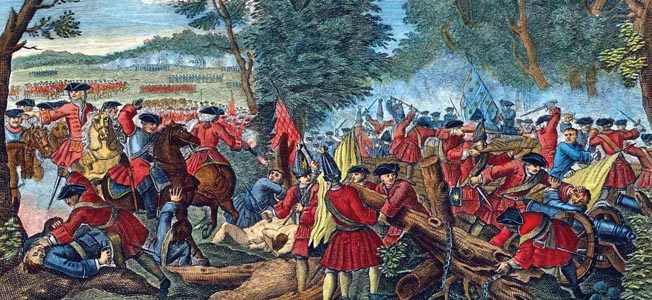
Sometimes, the commanding officer would order two ranks to fire at a time, making certain that the fire rolled from rank to rank. Provision was also made for firing while either advancing or retiring. This method recalled that of the caracole of the previous century and was used by the French until the late 1740s. The British often adopted various practices to evade the French fire. As soon as they saw the enemy infantry assuming a firing position, they fell flat on their stomachs and waited until the French had fired. Then, virtually unscathed, they got up and resumed their attack. This is what the Black Watch did as they attacked the French infantry in the entrenchments around Fontenoy. The fact that it was extremely difficult to direct oblique fire posed a severe disadvantage for the French defenders.
The Battle of Malplaquet: Platoon Fire vs Fire-by-Rank
Both the British platoon firing and the French rank firing systems were well illustrated at the Battle of Malplaquet on September 11, 1709. In the morning hours, the British and allied infantry right wing, a total of 83 battalions, attacked the French infantry entrenched behind breastworks. The French fired by rank, causing fearsome casualties and beating back each British attack. Around 1:30 that afternoon, the French threw their massed cavalry squadrons in counterattacks against the British infantry, which used platoon firing. Despite repeated attacks, the British defeated the cavalry charges with heavy casualties.
The French continued to use the rank system during the wars of the Polish and Austrian Succession although they had begun to realize the advantages of the platoon firing system. A new regulation of May 3, 1750, permitted three different methods of delivering fire: fire by ranks, platoon fire, and independent fire, which the British termed “running fire.” In the French platoon system, firing began from the center of the battalion, then spread to the wings, alternating between platoons on the left and right. The fifth platoon fired first, with the men in the first two ranks placing one of their knees on the ground and all ranks firing together. This practice followed new Prussian and British systems then coming into use. Like the British and Prussians, the French had begun to replace their wooden ramrods with heavier iron rammers, which helped to speed loading.
The Quick-Firing Prussian System
By 1740, a new major military power was moving into the forefront of European history—Prussia. The Prussian infantry was groomed for greatness by two men: King Frederick William II, who nearly bankrupted his small country to build an imposing army, and his cousin, Prince Leopold of Anhalt-Dessau, who trained and equipped the army. Leopold’s reforms covered almost every aspect of service. His overriding aim was to produce “good shooting, quick loading, intrepidity and vigorous attack.” To accomplish this, he abolished the fourth rank, introduced the iron ramrod, and trained his men to fire three to five rounds per minute on the move.
The speed with which the Prussians proved capable of deploying and firing at the Battle of Mollwitz astounded their less-nimble Austrian opponents. The so-called walking muskets, with their unquestioning obedience, ferocious discipline, parade-like movements, and frequent blasts of fire, soon became the best infantry in mid-18th-century Europe. In action, the Prussians adopted two alternate firings by odd and even platoons; fire by individual platoons from right to left was still widely employed, but under certain circumstances (such as a full brigade attack) a whole battalion would fire at once. Infantrymen were trained to fire as they advanced at the rate of 75 paces to the minute, termed the “common step.” It was claimed that 2,000 men were capable of letting off 10,000 shots in 60 seconds.
Frederick the Great inherited the Prussian system when he came to the throne in 1740. Despite its virtues, the method of alternate firings while advancing was difficult to perform and demanded the highest possible level of discipline and training among those attempting to employ it. Not only did the infantrymen have to be completely expert in loading under battle conditions, but the officers, especially those commanding platoons, had to be thoroughly familiar with a series of commands for the firing process. Prussian regulations were translated into English and appeared in 1759. They prescribed that during all firings, absolute silence must be maintained in the ranks; no moving about was permitted.
The Prussians used additional methods to increase the speed of their firings. Enlarging the vent hole at the breech allowed them to load their rifles without priming or ramming, enabling them to load and fire up to five rounds per minute. Nevertheless, it took a good deal of concentration and nerve to load a flintlock under enemy fire. In addition, after a few rounds the barrel became fouled with black powder residue, especially in humid weather. The soldier also had to avoid touching the scalding-hot barrel, see to the sharpness of his flint, and prevent the fouling of the vent and the lock, for which he was equipped with a wisk and a vent pick. With the fouling, fatigue, noise, casualties, confusion, and jostling in the ranks, rates of fire inevitably slowed down, giving way to uncontrolled “running fire” that, once begun, officers had great difficulty stopping.
The British Alternate System of Firing
In the British Army, platoon firings required complex arrangements, training, and timing. Frequently, soldiers on the noisy and confused battlefield had difficulty hearing orders by shouted command or drumbeat. The 1728 Exercise for the Horse, Dragoons, and Foot Forces had been copied word for word from Humphrey Bland’s privately published Treatise of Military Discipline of the previous year. The author, a lieutenant colonel in the 2nd Regiment of Horse, extensively discussed platoon exercises, rank-and-file-intervals, the essentials of firing, and other details. The 1757 Manual Exercise, prepared by the Duke of Cumberland, his adjutant general, Robert Napier, and Lt. Col. Alexander Dury of the 1st Foot Guards, retained the platoon firing system. It was plain by the end of the Seven Years’ War in 1763, however, that a new system was required. Having come under the influence of the Prussians in the 1740s and 1750s, the British now began to use the alternate system.
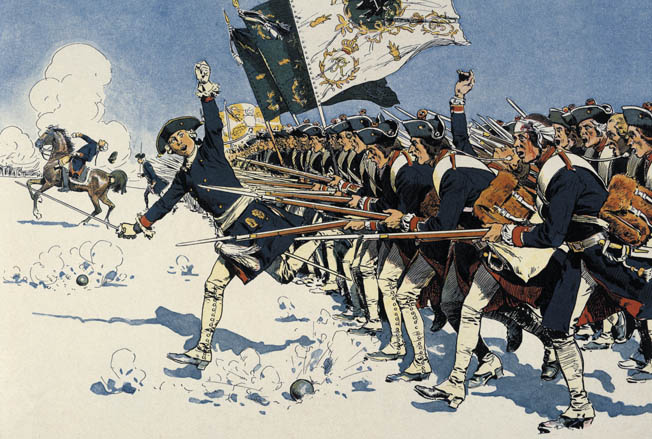
The different tactical formations within an infantry battalion were often confusing and contradictory. Within the platoon firing system, the platoon was the basic tactical unit; the company simply formed an administrative entity. In alternate firing, the means most favored to avoid confusing the soldiers was to turn each company into a fire unit. In the new British regulations of 1764, these companies, now designated sub-divisions, were numbered according to the sequence in which they should fire—either from right to left, from the center of the battalion outward to the flanks, or from the flanks in toward the center.
Two of the eight line companies (sub-divisions) formed a grand division. The grenadier company remained in its accustomed position on the right flank, while the new light infantry company, beginning in 1770, formed the left flank. The new regulations provided for volley firing by platoons, sub-divisions, and grand-divisions. Not breaking up the companies improved the morale of the men since they went into action in their accustomed units with officers and men they already knew. The alternate system was much easier to perform, with the elaborate telling off and the separating of platoons to coordinate their fire now being avoided.
Although alternate fire was not officially adopted until the publication of the 1764 regulations, it had already been practiced in the best-trained battalions. One such unit was the 20th Foot, of which James Wolfe was lieutenant colonel. Wolfe thought alternate fire more practical than the regulation platoon fire—“the impracticable chequer,” as he described it. In a regimental order of January 1755, Wolfe termed alternate fire “the most simple, plain and easy, and used by the best disciplined troops in Europe [i.e., the Prussians].” The 1764 regulation methods remained in effect through the publication of the new 1778 regulations, although only those troops serving in the British Isles were subject to them. There was no change in the alternate firing system, although the firing now was prescribed as starting from the flanks and moving to the center of each battalion.
Other military commentators wrote extensively of the alternate system during this period. Thomas Simes’s five volumes represented the most voluminous collection of basic material on regimental administration and daily routine in the army. In The Military Medley of 1768, Simes, a captain in the Queen’s Royal Regiment of Foot (2nd Regiment), suggested an elaborate method for firings by a battalion of infantry. The first two volleys were fired by platoons from the right and left to the center, twice from the center to the right and left, once from the right and left to the center, and so on until a final battalion volley.
Alternate System in the American Revolution
American forces preparing for the War of Independence studied British manuals closely. In early 1775, Timothy Pickering, a militia officer in Massachusetts and the future quartermaster and adjutant general of the Continental Army, described the historical background of the platoon system used by both the Prussian and British armies. He explained the difficulty of performing it in battle as the reason for its replacement by the alternate system. Pickering went on to explain the alternate system and detailed firings by platoons, sub-divisions, and grand-divisions. He preferred to use the term “company” rather than “sub-division” since it was more familiar to the soldiers and would not be confused with grand-divisions. He also preferred alternate firing by platoons since they could fire in much quicker succession than by company or grand-division. Pickering reminded his readers that in the Prussian service, battalion commanders were strictly enjoined to ensure that half the platoons or grand-divisions of the battalion were always loaded and shouldered.
Both the British and American forces entered the Revolutionary War using a version of the alternate firing system. The British used the 1764 system, although they also reduced their ranks from three to two and opened their ranks to an extended interval. The Americans used a variety of manuals, including the 1764 version, until General von Steuben published his drill manual in early 1779, which regularized the alternate system for all American troops.
Baron von Steuben’s “Blue Book”
Baron Friedrich von Steuben was a former captain in the Prussian Army and, therefore, a product of that comprehensive school. When he arrived in America in late 1777, von Steuben brought with him a great deal of combat experience. Once he finished instructing the disorganized and untrained Continental Army at Valley Forge, he set out with his staff to write the drill and training manual, popularly known as the “Blue Book,” that remained the American army standard until 1812. Von Steuben had witnessed the service of the Prussians during the Seven Years’ War and unhesitatingly adopted the alternate system for the new American Army.
His firing directions encompassed those for platoons, divisions (companies), and battalions. Inexplicably, he did not include firings by grand-divisions, and in a major change with tradition, American infantry was formed in only two ranks rather than the customary three. He also stipulated that a platoon must include at least 20 men so that its volley would deliver enough musket rounds to be effective against the enemy. Understrength Continental Army units were combined to bring them up to effective combat strength.
The Alternate System Wins Out at the Battle of Monmouth
British forces employed shock-oriented tactics that were distinctly at odds with contemporary European practices. The rationale behind this approach was that a battalion’s best means of eroding its opponents’ will was to stand its ground or to press the attack closely, fire one or two massed volleys, then charge with the bayonet. In fact, there is little evidence that the British infantry in America employed regulation firings, whereby volleys were delivered in strict succession by the battalion’s four grand-divisions, eight sub-divisions, or16 platoons in prearranged sequences. This was done for three reasons: first, the preference for the bayonet against the shaky rebels; second, the need to fight over broken terrain and extended frontage; and, third, the lack of American cavalry, which did not require the British to reserve a portion of their fire at all times to deal with sudden emergencies—hence the preference for a single general volley immediately prior to the bayonet charge. The genuine number of sustained firefights during the Revolutionary War could be counted on the fingers of one hand: Brandywine, Saratoga, Monmouth, Cowpens, and Eutaw Springs.
At Monmouth, on June 28, 1778, a British attack was aimed at the American left wing. The British light infantry and the Black Watch pressed forward and were taken under fire by the American artillery. Volley after volley of musketry from the Americans, stationed behind a hedge, went on for nearly an hour. The precision of alternate volley fire, regularized by von Steuben, was the reward for his training. The pressure on the American wing was relieved when the 1st and 3rd New Hampshire Regiments and the 1st Virginia moved to the left through the thick woods and charged the extreme right of the British line, which gave way and fell back. The Americans had used British tactics to win the day, proving once again that when used as originally intended the alternate system of firing could produce successful results.

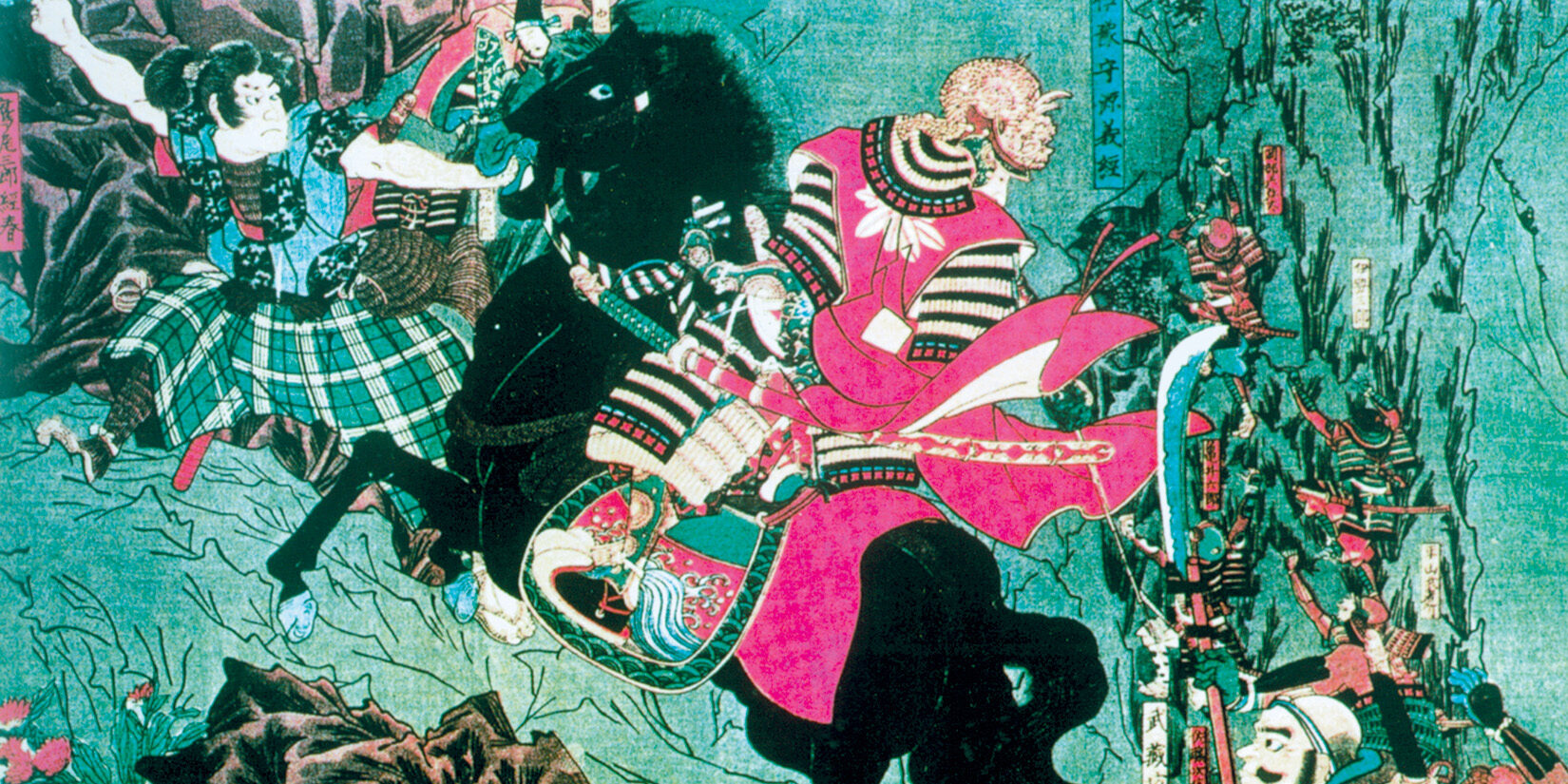
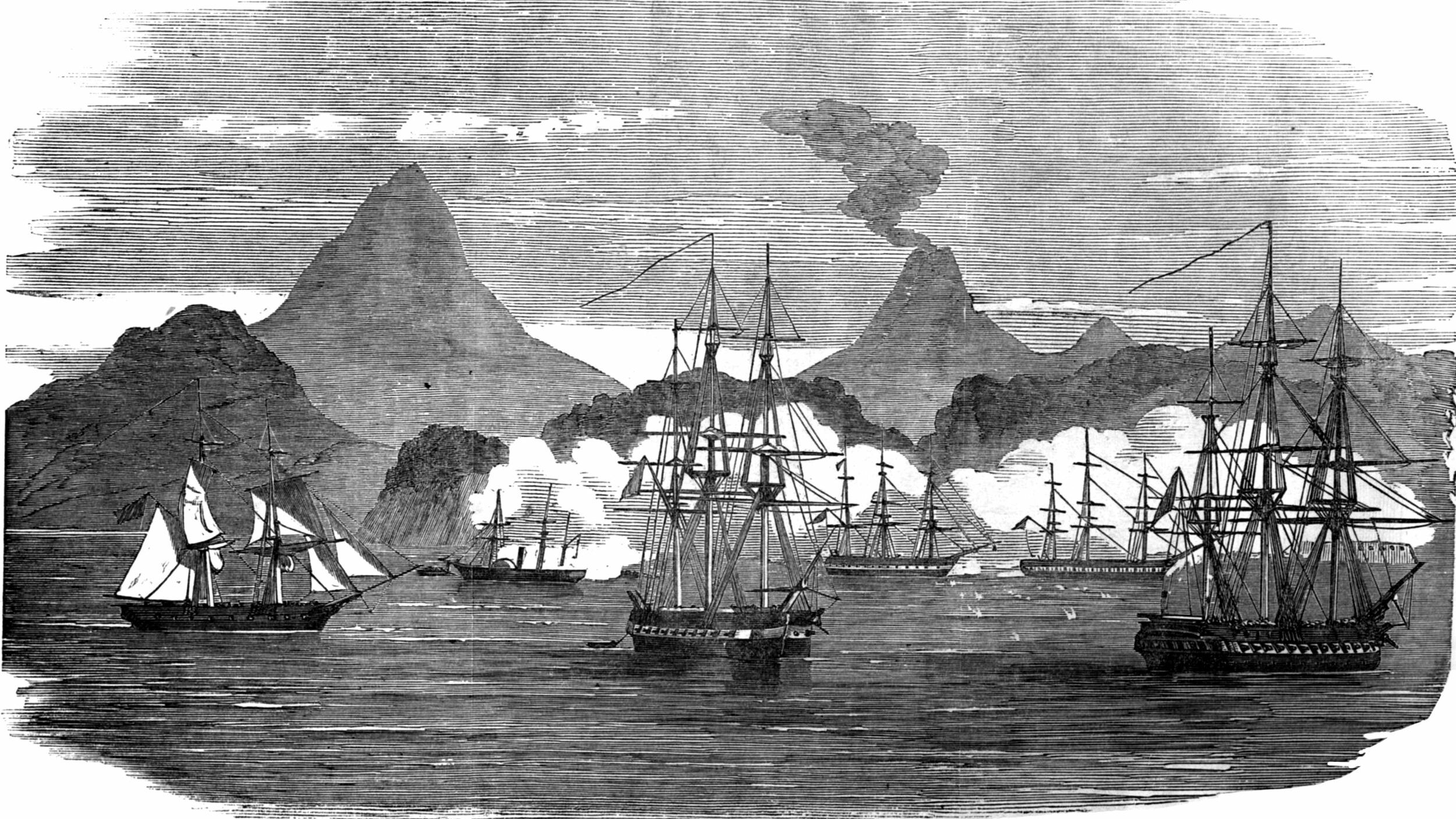
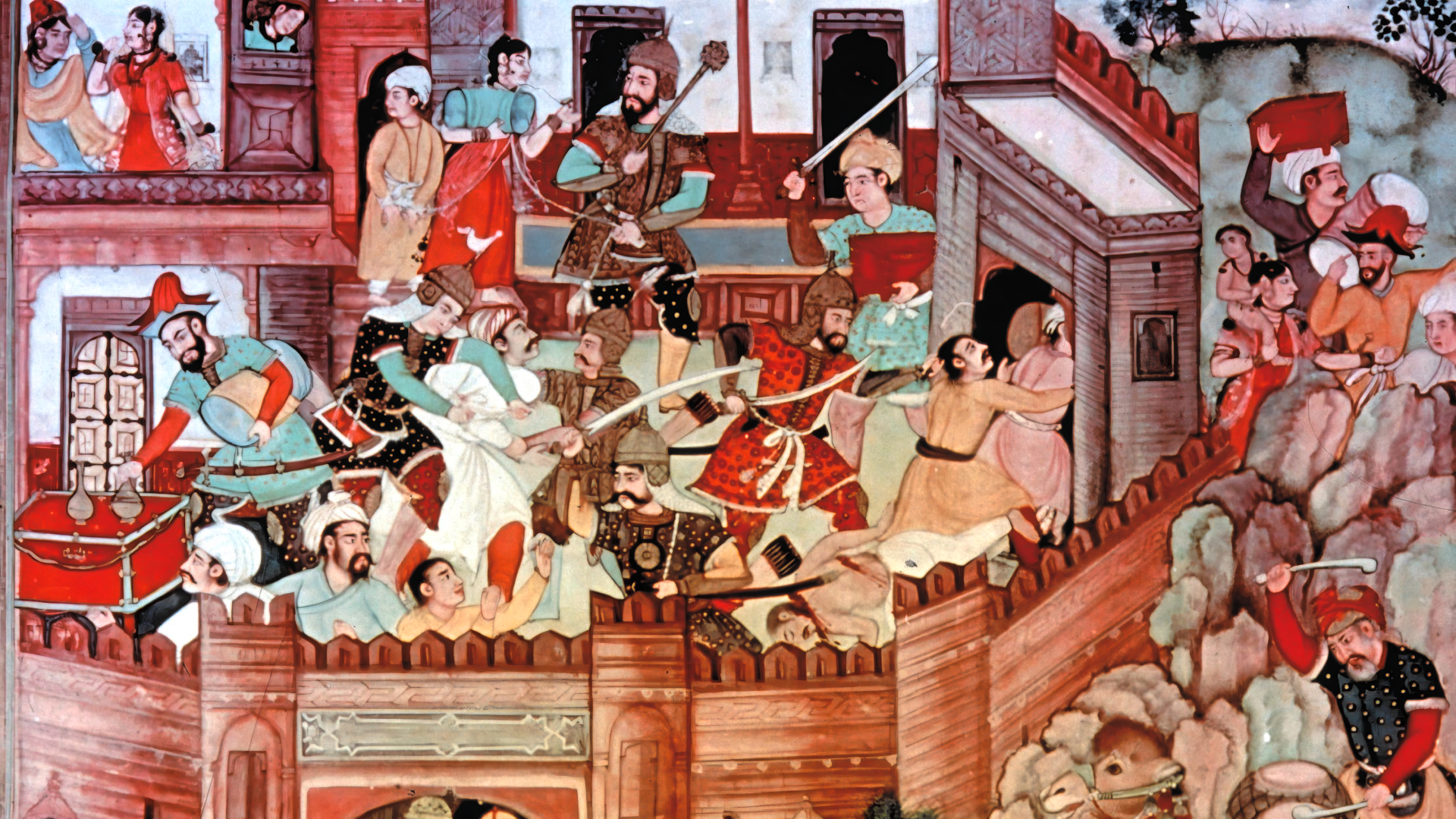
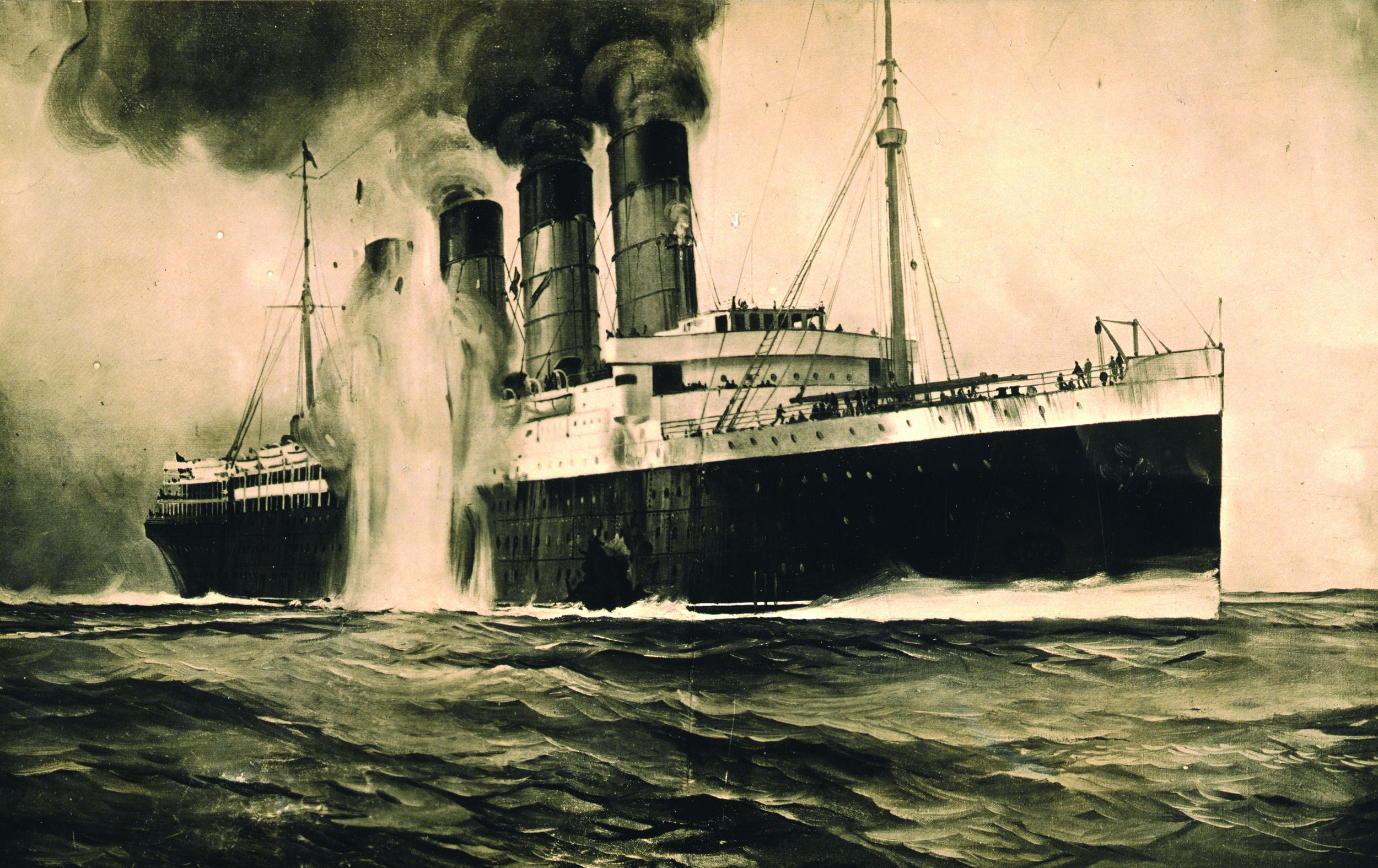
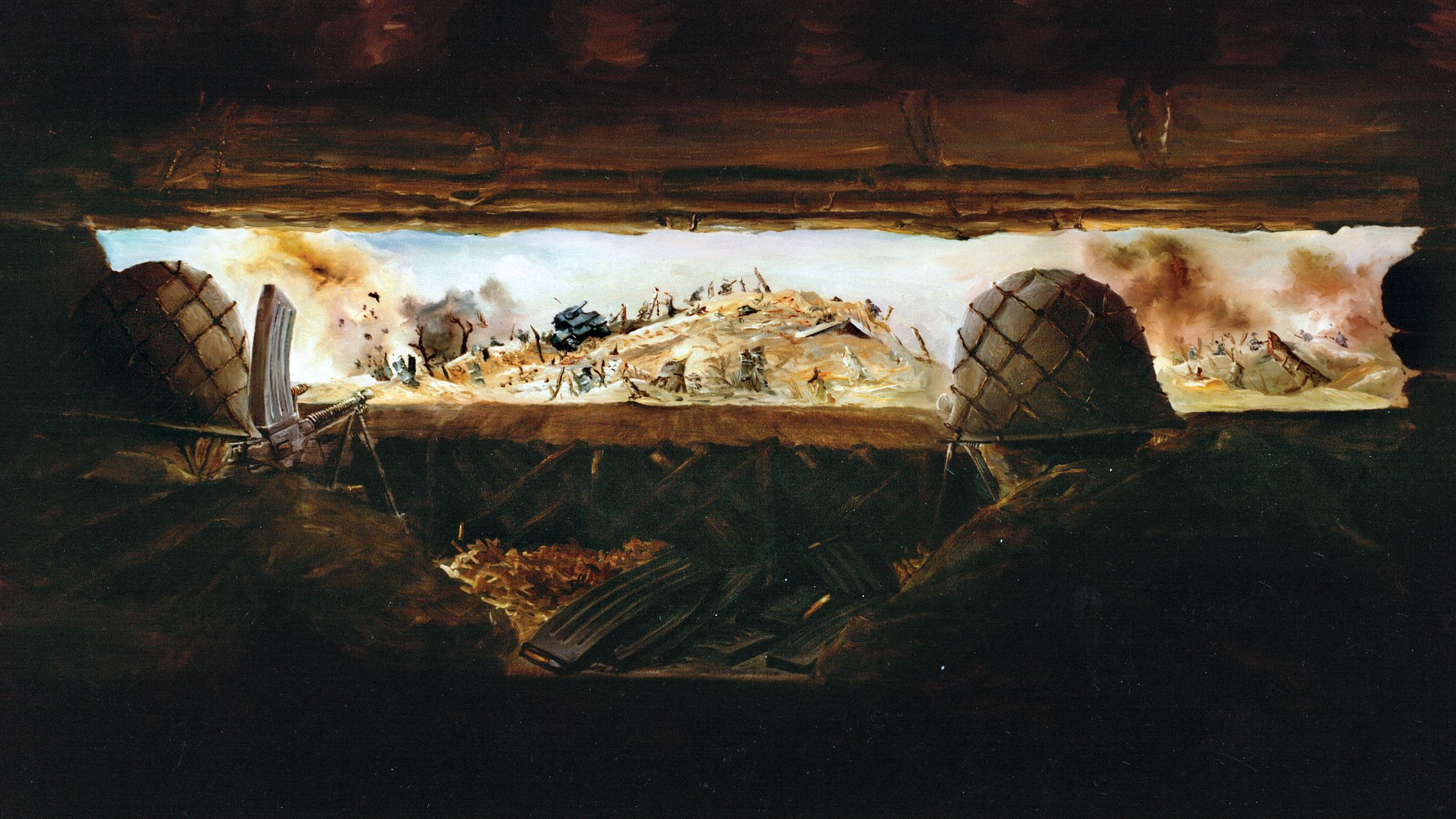
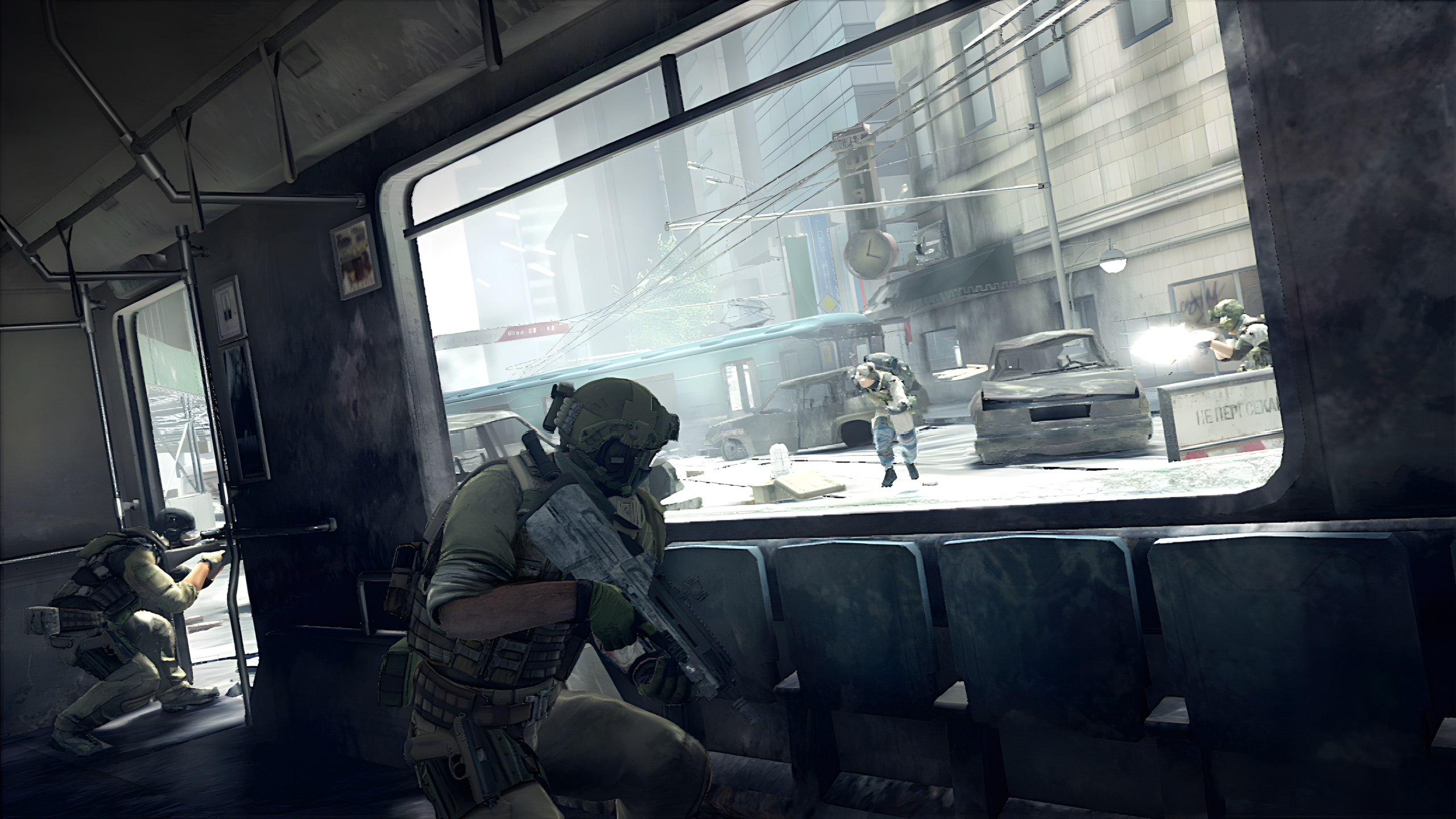
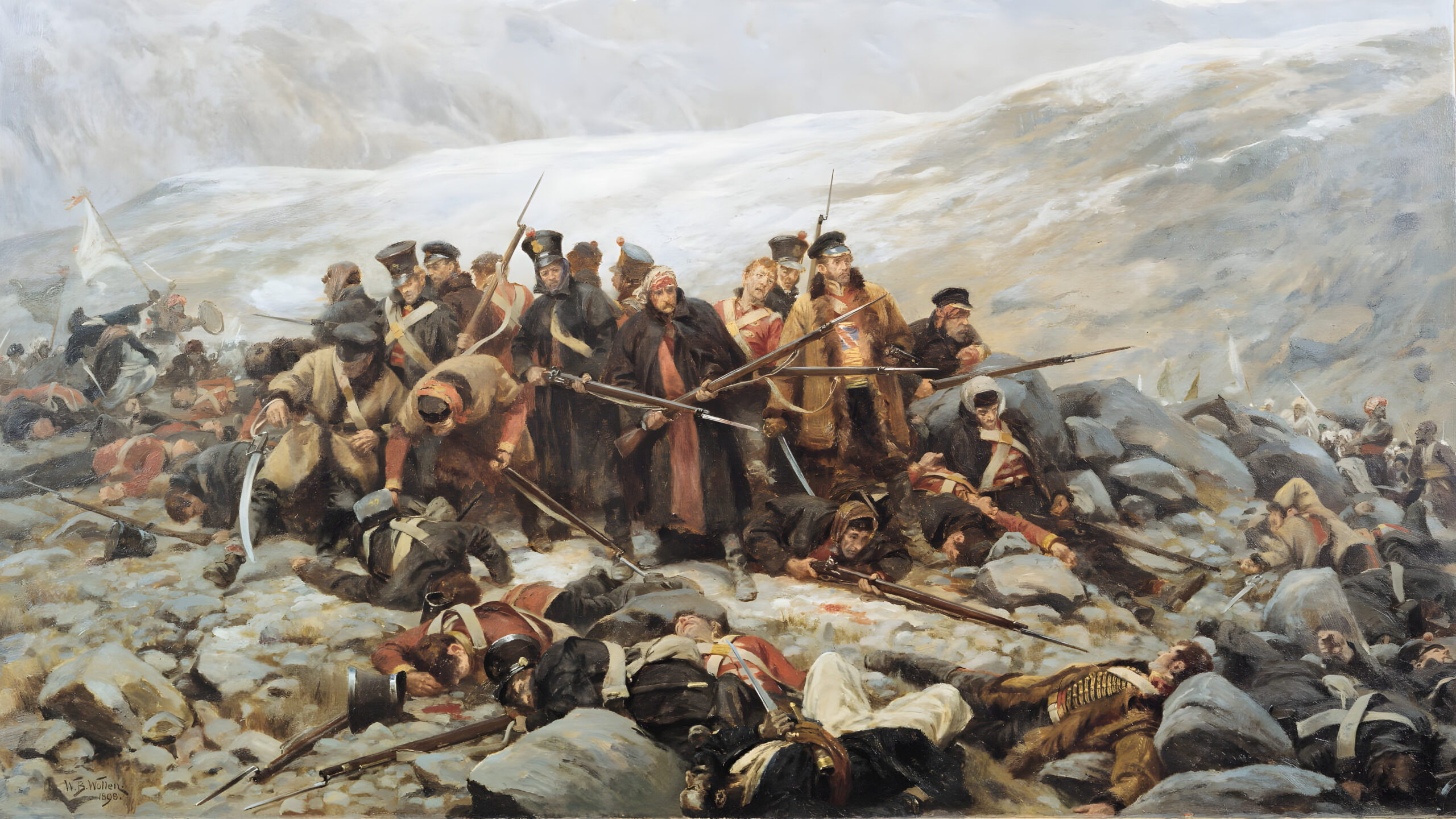
Great article!
Do you have any more information on how the British soldiers lay down before the enemy fired? Like the Black Watch for example.
I know there was a company of British Light Infantry that used to do that in the American Revolutionary War.
Thanks
James Harper